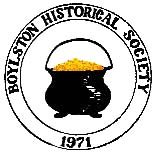The Golden Era of Radio
The Golden Era of Radio
By Carrie Crane
It was Christmas Eve 1906 on board a United Fruit Company ship, somewhere off the Atlantic coast. At 2100 hours, the evening was interrupted by a ‘general call’ in Morse code coming in over the ship’s radio. Immediately following that, over the radio speaker came the sound of Handel’s Largo, followed by an amateur but much appreciated playing of Oh Holy Night, a reading from the Bible and a heartfelt wish for a Merry Christmas. This, so the story goes, was the first ever radio broadcast and was transmitted from Brant Rock, Plymouth County, Massachusetts.
The host of that inaugural broadcast was Reginald Aubrey Fessenden, born 1866 and credited with being the father of broadcast radio. Fessenden, with an interest in math, music and languages from a very young age, made his way up through the electrical engineering ranks by working for, and with, an impressive list of technologists, J. P. Morgan, Thomas Edison, George Westinghouse, and others, each of whom recognized his talents and propelled his career onward. He became intrigued with the discovery of ‘wireless telegraphy’ (later referred to as radio) by Italian inventor Guglielmo Marconi, a technology that merged sound wave patterns with radio waves to allow for simple sounds to be transmitted over a great distance. Fessenden later found a more efficient way to transmit sound information that made it possible for the more complex sound of the human voice to be sent at a greater speed. While radio technology was put into service at the turn of the 20th century, it did not find its way into common use until the mid 1920s. At that time, with the development of the wall socket, battery-free radio (the batteries were known to be troublesome and messy) and the growth of interesting programming, the radio was poised to become a household item.
Despite the stock market crash of 1929 and the ensuing Great Depression, or perhaps because of them, the popularity of the radio boomed. In 1925, less that 20% of households owned radios, by 1930 that number had reached 40%. Interestingly, Massachusetts lead the nation in radio ownership with a record 96% of households.
It is no wonder then, that the Boylston Historical Society Museum has two radios from this period in its collection. One of the beauties, a rare Steinite model 28, is an early Cathedral style piece powered from a wall socket using four 4” vacuum tubes. At 16” wide and 18” high, it was designed to sit on a table or mantle. Its graceful arching shape is constructed from veneered plywood with an exquisite, solid wood scroll-work front.
There is a lot of discussion among radio enthusiasts about the origins of the ‘cathedral style’ (a term that came into use only after the style had become popular). While there are many theories, it is difficult to find confirmation of any. It is possible that the design was merely a continuation of the late 19th and early 20th century interest in Gothic architecture. In any case, it is a handsome design copied by most of the leading radio manufacturers of the time until its appeal faded in the mid 30s.
Steinite Laboratories was founded in 1910 by Fred Stein in Atchinson, Kansas. After his service in World War 1, Stein began manufacturing crystal radios and as early as 1927 he built one of the first wall socket models. At that time, he also developed a tool to measure moisture in woods and grains. Ultimately, the company focused on the latter line of the business and only made radios until the early 1930s.
By the time of the 1940 census, about 82% of households had radios and the country was in the midst of what is often referred to as the Golden Age of Radio, a period that stretched from the mid 20s until television came on the scene. Families would huddle around the ‘wireless’ to listen to their favorite programs.
News, sports, comedy, music and drama, along with Franklin D. Roosevelt’s reassuring ‘fireside chats’, captivated and connected audiences across the country. This also marked the beginning of commercial radio broadcasting with the onset of program sponsorship and advertising. The promise of these new revenue streams gave rise to companies like the National Broadcasting Company (NBC) and Columbia Broadcasting System (CBS), companies that are still going strong, informing and entertaining Americans today.
---------------
Acknowledgements:
Mervin C Fry, https://www.ieee.ca/millennium/radio/radio_birth.html ; https://en.wikipedia.org/wiki/History_of_radio; https://www.sparkmuseum.org/the-golden-age-of-radio/; https://www.census.gov/history/www/homepage_archive; /2015/march_2015.html; http://lcweb2.loc.gov:8081/ammem/amrlhtml/inradio.html; https://www.kshs.org/kansapedia/frederick-stein/19737; image credit: http://www.radioreruns.com/1930_1934.html
